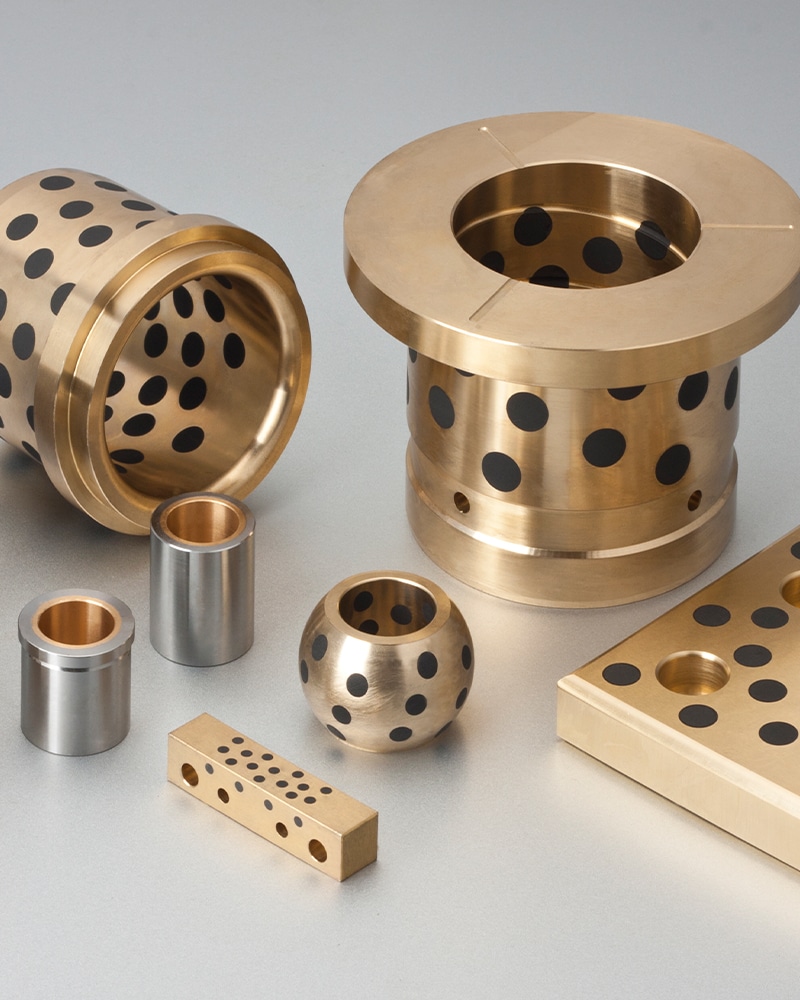Bronze Copper Alloy :
Chemical composition and Selection Guide, Custom Machined Bronze Parts & Bearings
Bearing Bronze Solutions – Tailored for Efficiency & Strength
bearings Bronze Standards, Bearings and bushings, High-Temperature Bearings, Customer Driven, Service Focused, Purpose Led for Your High Temperature Bushings
Bronze is a versatile copper alloy, primarily composed of copper and tin, but it can also include other elements such as aluminum, lead, and nickel to enhance its properties. Below is a detailed overview of the chemical composition, types, and selection criteria for different bronze alloys, particularly focusing on tin bronzes, aluminum bronzes, and self-lubricating bronze bearings. We provide a wide variety of bushings, including Wicket Gate Bushings and Gate Valve Bushings, tailored for the Hydro Industry. Removing any component from a hydro turbine is a complex, costly, and time-intensive process, as these systems are designed to operate continuously for extended periods without shutdown.
Self-Lubricated Bronze Bearings
Bearings, Bushings, and More Bronze, Graphite
Plain & Self-Lubricating Bushing Material:Graphite Impregnated Brass, Chemical Composition of Bronze Alloys
Bronze alloys are categorized based on their primary alloying elements:
Tin Bronzes: These typically contain copper and tin as the main components. The addition of tin enhances strength and corrosion resistance. Common tin bronzes include:
- C90300: 90% Cu, 10% Sn
- C90500: 88% Cu, 12% Sn
- C90700: 85% Cu, 15% Sn
Aluminum Bronzes: These alloys use aluminum as the principal alloying element. They are known for their high strength and corrosion resistance. Common compositions include:
- CuAl5: 4.0–6.5% Al
- CuAl8: 7.0–9.0% Al
- CuAl10Ni5Fe4 (2.0966): 8.5–11.0% Al, 4.0–6.0% Ni, and up to 5.0% Fe
Leaded Bronzes: These contain lead for improved machinability and reduced friction but at the cost of some strength.
The presence of other elements like iron, nickel, and manganese can further enhance specific properties such as wear resistance and machinability
Types of Bronze Bearings
Tin Bronze Bearings: Tin bronzes are prized for their excellent wear resistance and ability to withstand high loads. They are suitable for applications requiring good corrosion resistance in seawater and brines. However, they require clean lubrication systems due to their hardness, which limits their ability to conform to rough surfaces1.
Aluminum Bronze Bearings: Aluminum bronzes offer superior strength and corrosion resistance compared to tin bronzes. They are particularly effective in marine environments due to their resistance to seawater corrosion. The addition of nickel can improve ductility without compromising strength. Aluminum bronze bearings are ideal for heavy-duty applications such as marine equipment and aerospace components35.
Self-Lubricating Bronze Bearings: Self-lubricating bronze bearings are designed to reduce maintenance needs by incorporating lubricants within the bearing material itself. Two common methods include:
Graphite Plugging: Bearings are machined with holes filled with solid graphite plugs that provide lubrication through a thin coating on the bearing surface during operation.
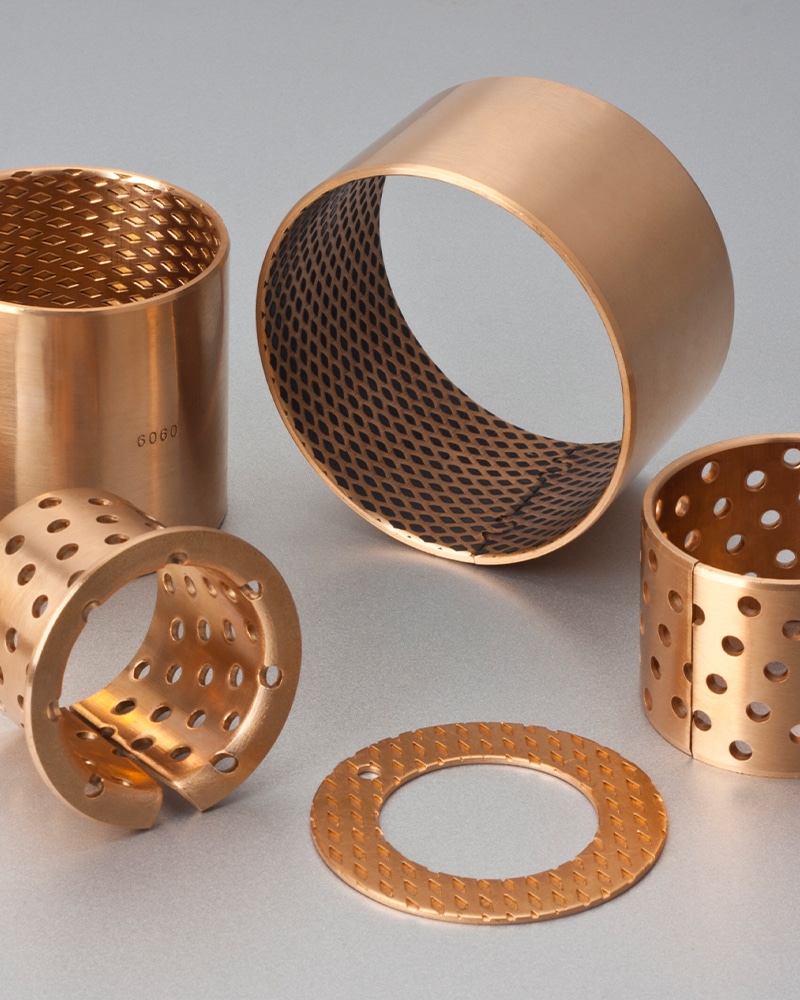
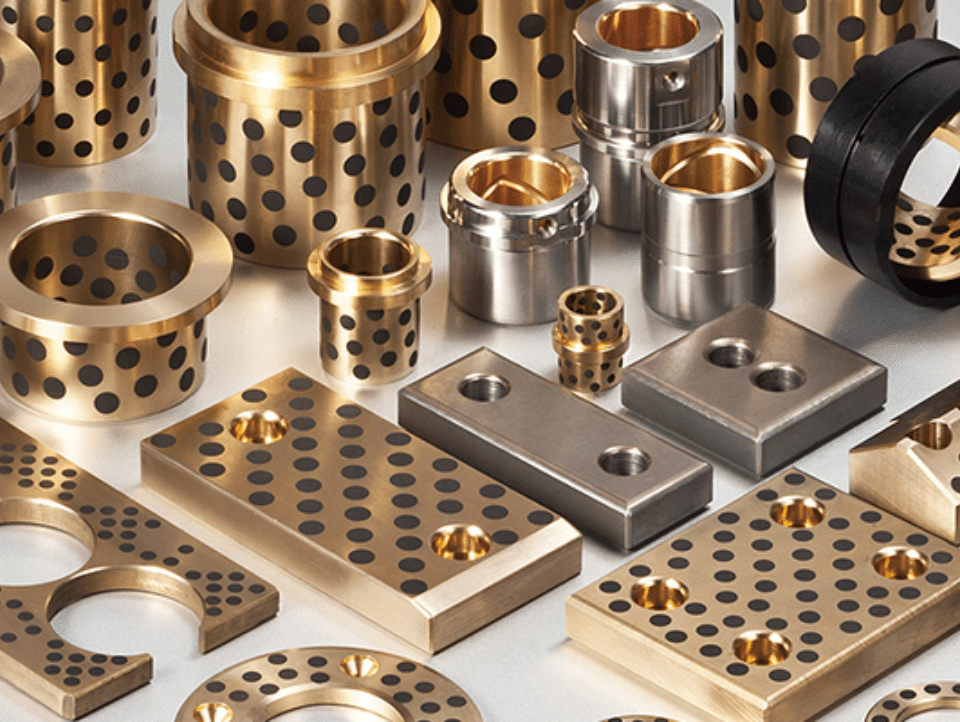
Selection Guide for Bronze Bearings, graphite bearings bushings
When selecting a bronze bearing material, consider the following factors:
- Load Requirements: Determine the load capacity needed for your application.
- Corrosion Resistance: Choose aluminum bronzes for marine applications or environments with high corrosion potential.
- Lubrication Needs: If maintenance is a concern, self-lubricating options may be preferable.
- Machinability: For applications requiring complex shapes or precise tolerances, consider leaded bronzes or alloys with enhanced machinability.
- Temperature Resistance: Aluminum bronzes generally perform better at higher temperatures compared to tin bronzes.
By understanding these characteristics and selecting the appropriate alloy based on specific application requirements, engineers can optimize performance and longevity in various industrial settings.
Future Trends in Bronze Copper Alloy Bearings for Engineering and Design, High Temperature Bushings
About us
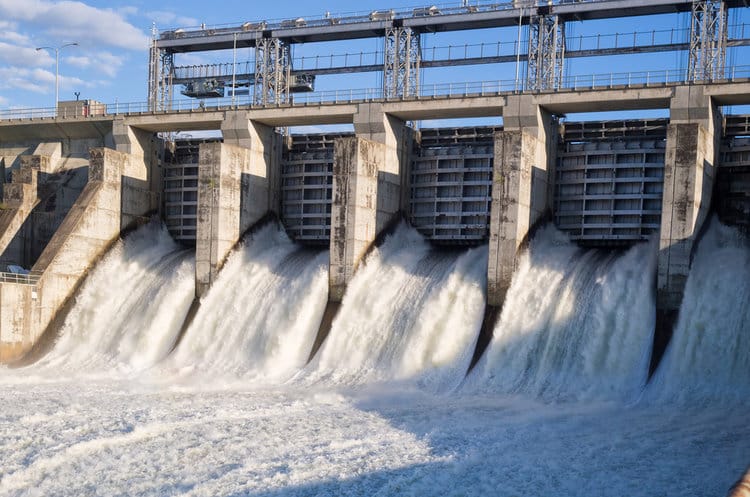
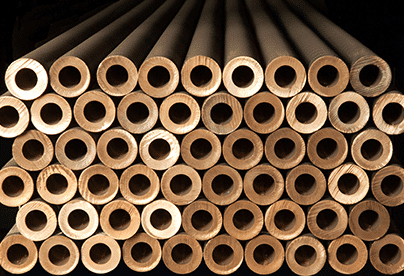
Bronze Bushings with Graphite for Fixed Wheel Gates
Applications for Fixed Wheel Gates
Fixed wheel gates are commonly used in water management systems such as dams and irrigation channels. Using C93200 (SAE 660) Material Standard ASTM B505 bronze bushings with graphite for fixed wheel gates combines the strength and durability of bronze with the low-friction benefits of graphite. This combination enhances performance, reduces maintenance needs, and increases reliability in demanding environments.
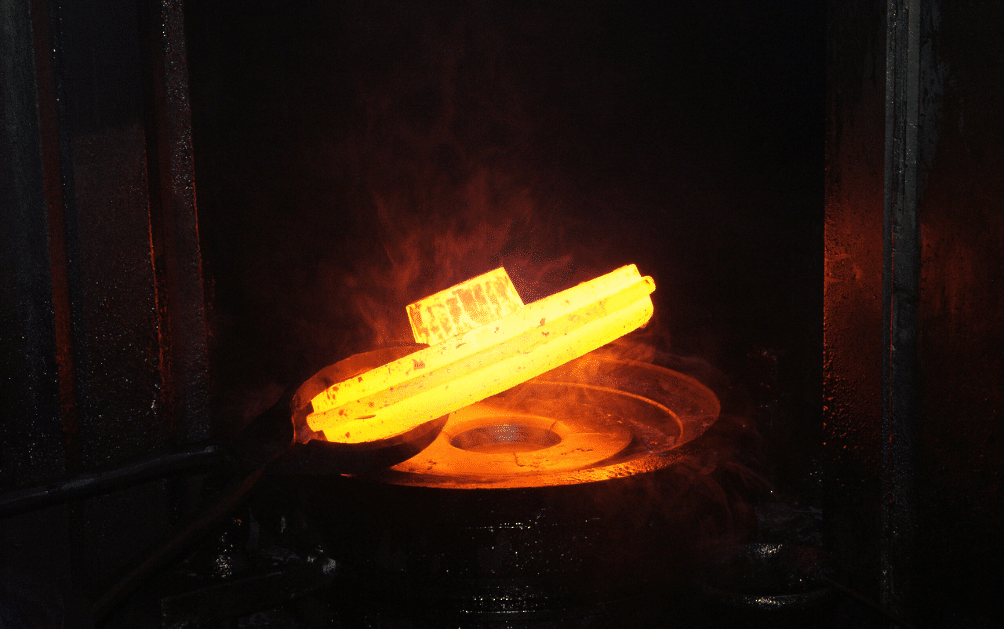
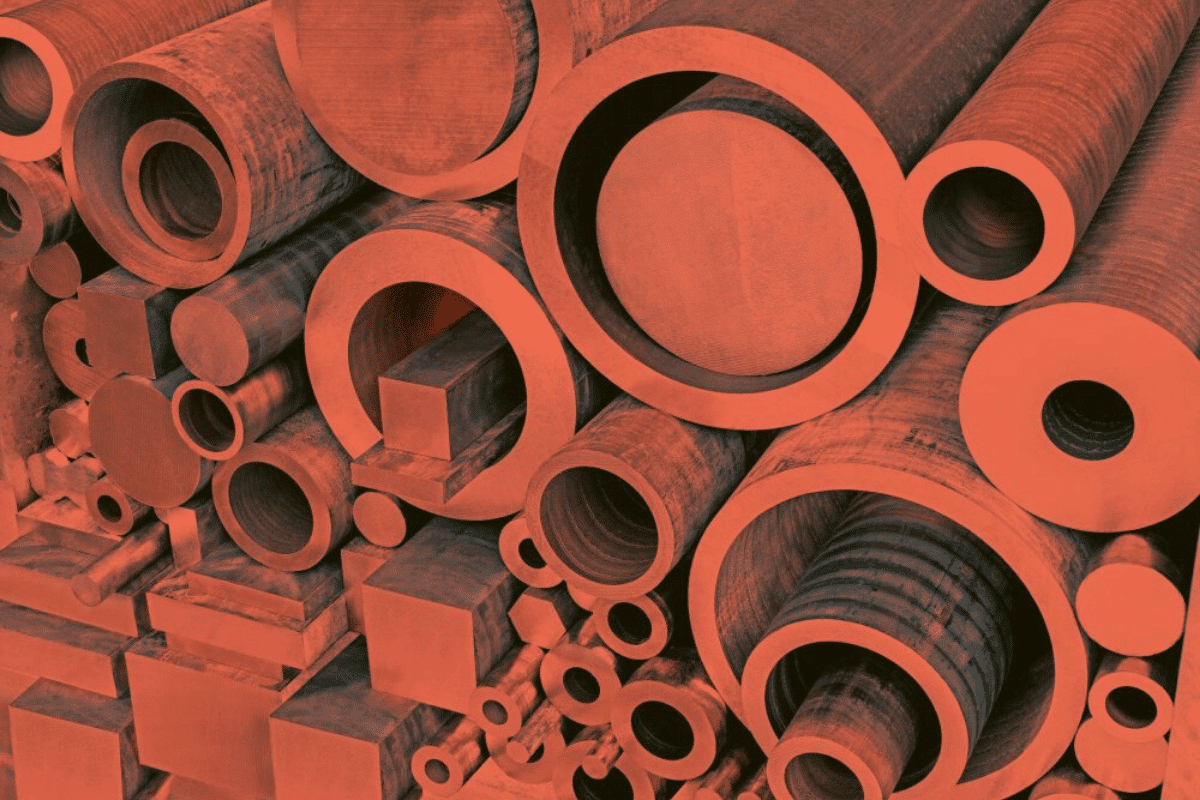
Graphite Integration Benefits, Upper Guide Bearing
Graphite Integration Benefits
Self-Lubrication: The graphite embedded within the bronze acts as a solid lubricant, reducing friction between the bushing and its mating surfaces. This self-lubricating property minimizes the need for external lubrication systems, which is particularly advantageous in hard-to-reach areas.
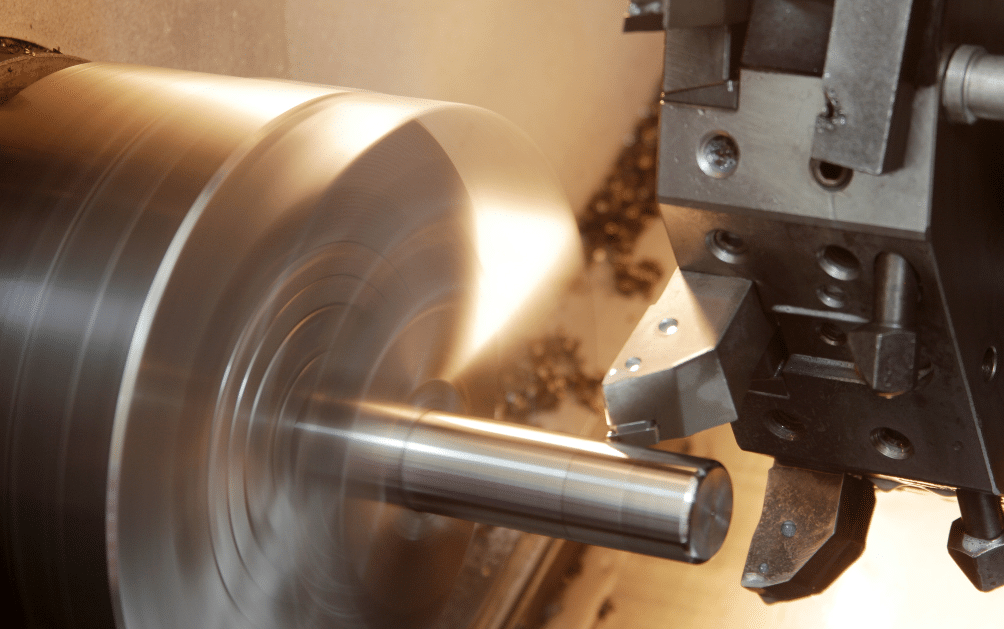
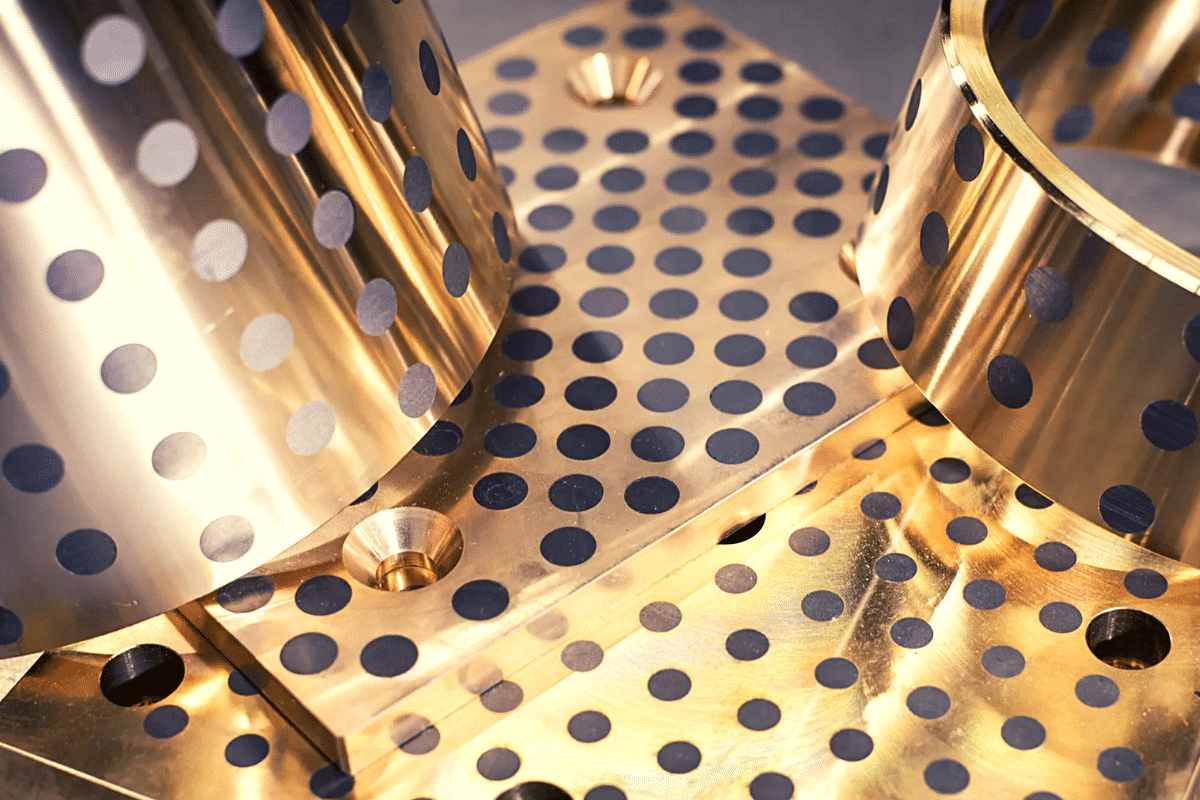
Temperature and Chemical Resistance
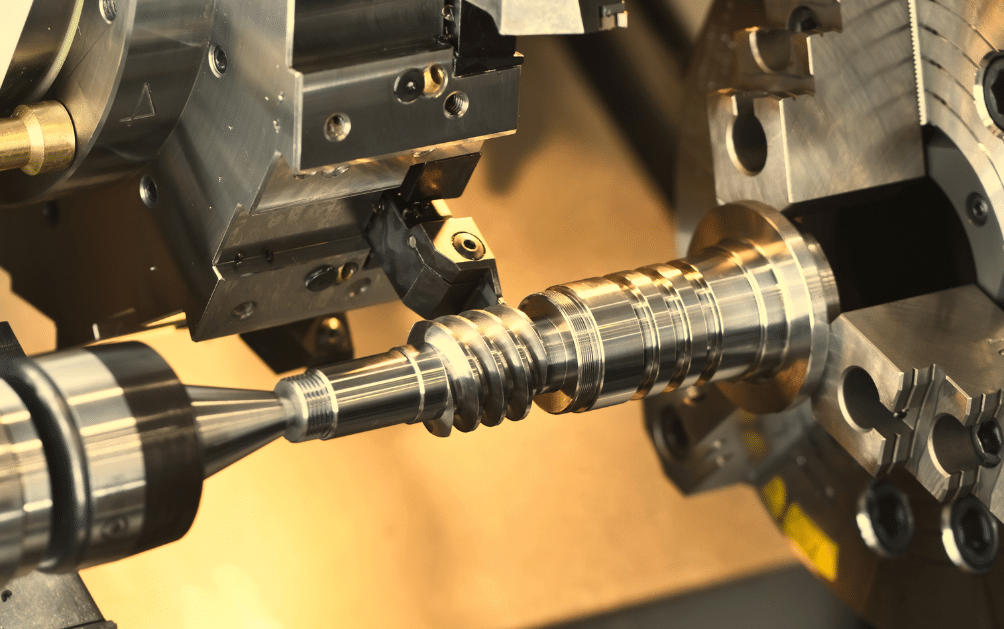
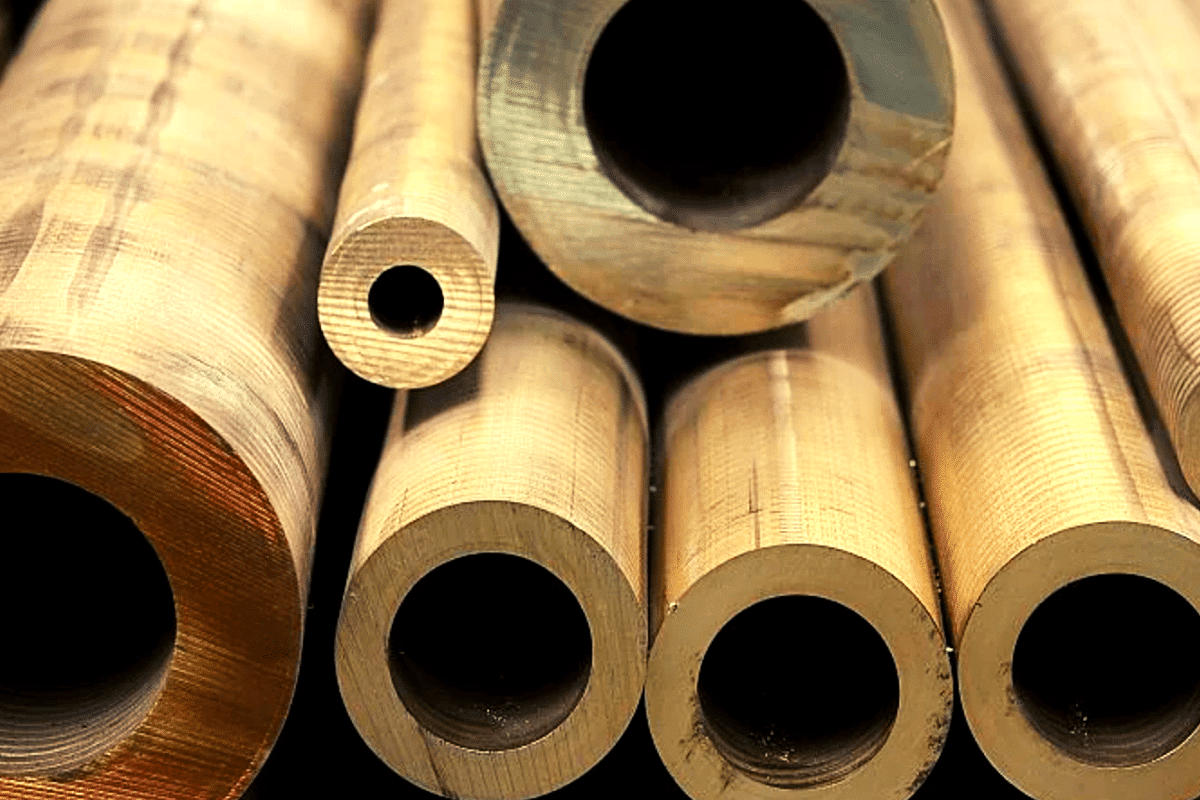
High Load Capacity
Custom Aluminum Bronze Bearing Parts,CNC Machining Service, Prototype Design & Engineer, a range of products including self-lubricating bushes and bearings
Bronze Copper Alloy, Chemical composition,
A Guide to Different Types of Bronze Alloys
While brass and bronze are both coppers-based alloys, bronze is more resistant to corrosion and harder than brass, making it more suitable for applications where the materials will be exposed to moisture or other harsh conditions. There are different types of bronze alloys, each with its own unique properties and applications. When compared with normal plain bearings, bronze graphite bushes bearings are superior in wear resistance, seizure resistance and friction properties!
CuSn5Zn5Pb5 Bronze Bearing, a copper alloy containing tin and zinc.
Copper CuSn5Zn5Pb5 is a base alloy known for its excellent toughness, wear resistance, corrosion resistance, and elasticity. It requires good lubrication to operate under high specific loads. This tin copper alloy is also referred to as red bronze or leaded gunmetal.
CuSn6 bronze bearing, copper-tin-phosphorus alloy.
CuSn6 offers a strong blend of strength, cold formability, and hardness. It is wear-resistant, exhibits good corrosion resistance and weldability. Its high strength, elasticity, and favorable machining properties make it suitable for various springs and flexible metal pipes.
CuSn7Pb6Zn4 Bronze Bearing, Copper Alloy with Tin and Lead
CuSn7Pb6Zn4, also known as red bronze or leaded gunmetal, is a tin-lead bronze alloy. It is free-cutting and retains favorable thermal conductivity and lubrication due to its lead content. This semi-hard material exhibits a good balance of resistance and elongation, and is resistant to wear, corrosion, and seawater, making it suitable for general use.
CuSN8 Bronze Bearing, Copper Tin Phosphorus Alloy
Phosphorus bronze alloy C52100 (C521) combines tin, enhancing corrosion resistance and strength, while phosphorus boosts wear resistance and rigidity. These alloys are recognized for their toughness, strength, low friction coefficient, and fine grain structure.
CuSn10 Bronze Bearing, Copper Alloy with Tin
The CuSn10 CuSn-based alloy is noted for its remarkable hardness, toughness, wear resistance, corrosion resistance, and elasticity. It requires effective lubrication to handle high specific loads. To prevent tension during welding and cooling, which occurs at high temperatures over a short range, careful attention is necessary.
CuSn12 Bronze Bearing, a tin bronze copper alloy.
The material has excellent wear resistance and is resistant to corrosion and salt water. The CuSn12Ni2-C alloys, derived from this material, offer enhanced stability, wear resistance, and improved anti-friction properties. Alloy CuSn12, categorized as C90800, meets the Federal Law on Lead Reduction in Drinking Water.
CuSn14 Bronze Bearing, Tin Bronze Copper Alloy
The CuSn14 alloy is a hard, tough bronze known for its good sliding properties and exceptional corrosion resistance. It endures significant forces, impacts, wear, abrasion, fatigue, and high temperatures, while also resisting high hydraulic pressures and exhibiting good anti-friction qualities. Additionally, it offers decent resistance to cavitation and seawater corrosion.
CuAl10Fe2 bronze bearings, a bronze copper-aluminum-iron alloy.
Aluminum bronzes like CuAl10Fe2 offer enhanced hardness and corrosion resistance compared to other bronze alloys. They are ideal for applications that require high corrosion resistance, particularly in marine environments. In CuAl10Fe2 and C95500, aluminum, iron, and nickel reinforce these alloys.
CuAl10Ni5Fe5 bronze bearings, a copper-aluminum-nickel-iron alloy.
Bronze nickel aluminum bronzes like CuAl10Ni5Fe5 offer enhanced hardness and corrosion resistance compared to other bronze alloys. This makes them ideal for applications requiring high corrosion resistance, particularly in marine environments. CuAl10Ni5Fe5 is recognized as the strongest copper alloy.
CuSn7Pb15 Bronze Bearings – Bronze Copper Tin-Lead Alloy tin and zinc.
The CuSn7Pb15 alloy contains 7 to 30 percent lead. These high-lead tin bronzes allow for easy machining while retaining good thermal conductivity and lubrication, making them ideal for bearing applications where lubrication limits may be compromised.
CuSn5Pb20 Bronze Bearings – Bronze Copper Alloy with Tin and Lead
High-lead content alloys can encase foreign particles due to their malleability, thereby protecting the wear surface of coupling components like shafts. These alloys excel in harsh environments where dirt and other contaminants are present.

